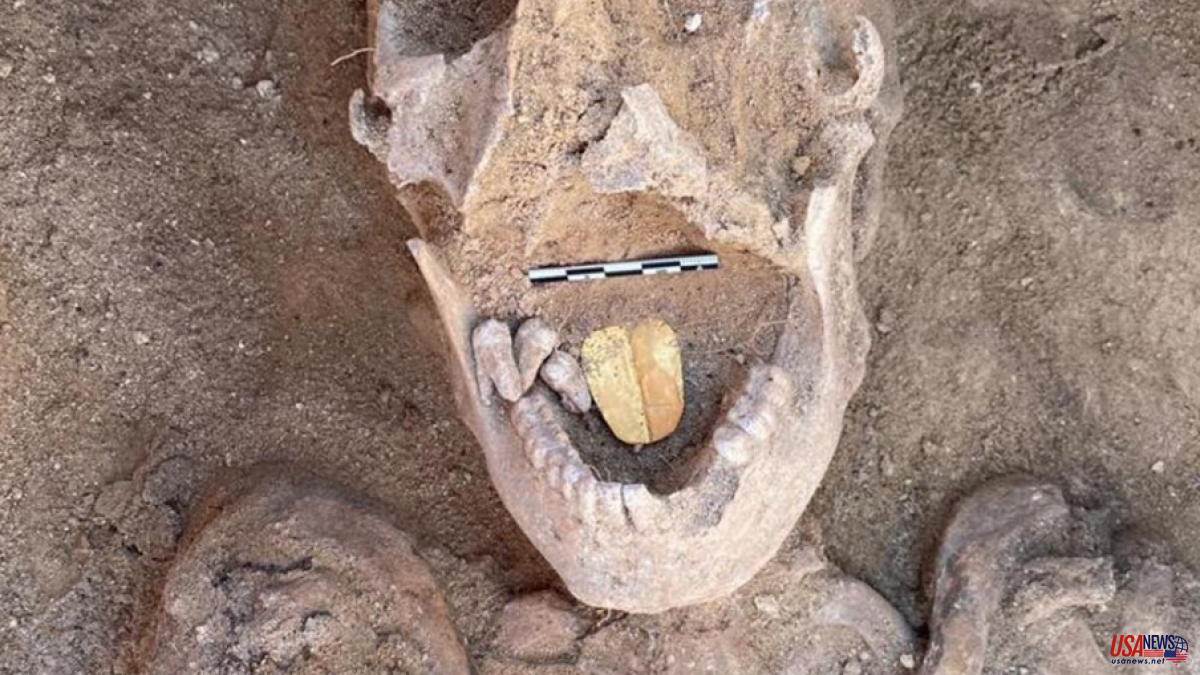It was not an ornament, but the key to eternal life. Osiris, the master of the underworld, was in charge of judging the dead. According to Ancient Egyptian mythology, in order to speak in court, the deceased needed an amulet, a key element that would allow them to express themselves before the powerful god. That is why the mummies were placed an ostentatious golden tongue.
The elite of the Ptolemaic and Roman periods, around 2,000 years ago, bet especially on this belief during their burials based on the idea that the person "has the ability to breathe, speak, eat and drink in the afterlife." After the two corpses with golden tongues found in the Taposiris Magna temple in 2021, three mummies have now appeared to whom this ritual was applied.
Archaeologists from the Egyptian Supreme Council of Antiquities working in the ancient cemetery of Quesea in Menufia Governorate in the north of the country have discovered a series of golden slivers in the shape of a human tongue in the mouths of some bodies, all they are in a rather poor state of conservation, as explained by Dr. Mostafa Waziri, general secretary of the council.
The investigated extension of the old cemetery is distinguished "by a unique architectural style," adds Dr. Ayman Ashmawy in a statement. The space was built with mud bricks and consists of a burial pit on the west side, with two rooms flanking it. The main vault extends from north to south.
Excavations inside the cemetery, one of the most important archaeological sites in the Nile Delta, revealed that it was used during three different eras, each with different artistic styles and burial customs. “Most likely, the site was used in the Late and Ptolemaic periods and later reused in Roman times,” Ashmawy says.
The mummies with golden tongues were found along with remains of linen and tar wrappers used in the embalming process. In addition, there was evidence of wood used to build human-shaped coffins that were sealed with bronze nails.
The archaeologists also managed to discover a series of gold slivers shaped like beetles and lotus flowers, as well as a series of funerary amulets, stone scarabs and ceramic vessels that were also used during the mummification process.
Professor Mustafa Rizk, general director of the Menufia Antiquities Region, recalled that the work carried out in previous seasons allowed the recovery of a series of tombs and architectural spaces where stone coffins in the shape of a human were found, as well as a huge granite sarcophagus that belonged to Al -Aswad, one of the most important priests of the city of Atreeb (Banha), the capital of the tenth region of Lower Egypt.













